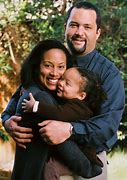
In light of the assets that nonwhite parents and families are to the classroom when advocating for the whole identities of their children and the ethnic and cultural relational gaps often found between these students and the predominately white-led and governed schools they attend, in this blog you will find…
-
- How to partner with your child’s teacher as the extremely valuable and essential expert that you are
- How to advocate for your child’s right to learn and feel mentally, emotionally, and culturally safe at school
- How to center your child’s ethnic history and heritage, rather than that of dominant white history and heritage, to promote self-esteem, engagement in learning, and an appreciation for the traditions and cultures of others within the mind and heart of your child
- How to identify and refuse the centering of white American accomplishments or European Western civilization and history in your child’s school coursework
- How to choose books that reflect your child’s ethnic heritage and teach your child to freely imagine a future where their full identity is protected, left intact and unharmed, and greatly valued as an asset and not a deficit
- How to use the social norms of communication and being naturally found within your family as powerful tools to engage your child in learning
- How to protect your child’s joy, humor, playfulness, self-confidence, discerning quietness, or intense curiosity in a world that sees these attributes in children of color as a disruption or a concern
I believe parents do a better job of considering the whole identities of their own child than schools are able or willing to do.
For example, as a parent I would not describe my role as a mother to be that of managing, controlling, or minimizing misbehavior in my child. Instead, I desire to intentionally provide him with safe and meaningful experiences that may assist him in uncovering his own abilities and interests. Now I’m not a completely hands-off parent, not that there’s something wrong with that. It’s just not me. But what I do know is I want to facilitate his autonomy within his own learning and not simply manage or try to control him. I want to engage his whole self not occasionally but daily to support the health and vitality of his faith in God including his emotional, physical, and intellectual being.
So in light of this, I pay close attention to anything coming anywhere near the vicinity of my child that may undermine the health and vitality of his whole self. I am not interested in classrooms that promise spiritual formation and dismiss his ethnic heritage. I am not impressed with classrooms that ensure the bare minimum of physical safety without engaging my child’s intellectual hunger. I acknowledge the gaps that my child would experience in spaces that may offer intellectual rigor and physical safety but don’t allow him to explore his inquiries about the God of the universe and of all creation. I seek to foster spaces where my child’s whole identity need not be silenced and fragmented, politically compartmentalized, or seen as a divisive or uncomfortable inconvenience in the classroom or during instruction.
Therefore, I do not place the large task of meeting my whole child on any teacher or in any school; although, I have stumbled across teachers that have boldly and lovingly met my child’s whole self. However, I do not expect it, but I am grateful when it has worked out that way for my child. When it has not worked out in his favor, either because of a provider, teacher, or coach, it has been painful for him and for my family as we work to interrupt or minimize the harm.
As a mom and professional educator, here’s what I have learned. In school, there are teachers willing to enter into the ethnic, spiritual, intellectual, and emotional spaces that their students live in everyday. Unfortunately, I do not believe that families of color encounter willingness, competency, and quality in teachers as often as schools would like to believe, especially when we look at the high frequency in which black boys and girls are dismissed from the classroom learning environment or suspending from school.
However, the teachers who decenter European American social and cultural norms, literature, and curriculum, choose to do so by refusing to teach in the same traditional and often culturally irrelevant manner in which they themselves were taught but instead by teaching what is accurate, equitable, and acknowledges the diverse contributions of students in shaping their learning. These teachers go beyond teaching within the boundaries of their own preferences, cultural perspectives, and comforts. When teaching reflects back to the reality, culture. and values that students are accustomed to, meaning their day-to-day contexts and life experiences outside of school, they spend less energy succeeding or failing at socially assimilating and more energy on learning and in fact take ownership of the academic content.
VISIT OFTEN as I share more of my own successes and strategies in advocating for my children in schools, childcare, and extracurricular spaces. Having been a teacher, in community with fellow colleagues, I have observed what has worked well in initiating and maintaining a teacher-parent relationship that creates accountability and builds a positive relationship within the child, teacher, and parent partnership.

